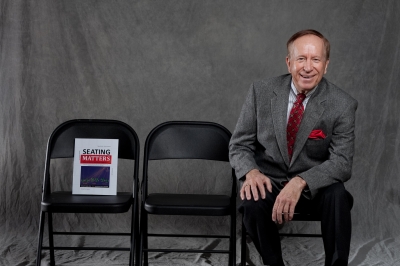Articles
Take Your Seats, Please: Paul Radde Shares His Wisdom
Originally Featured in Meetings TodayReprinted from Meetings Today, August, 2017
When it comes to creating engagement at meetings, there are myriad new formats and content options one can explore and implement. But sometimes it pays to just get down to basics: seating.

Dr. Paul O. Radde
One person who’s been doing that for about 35 years is Dr. Paul O. Radde, author of Seating Matters, the definitive industry tome on how to make sure your attendees have that most basic of tools to truly be connected to whatever programming is being presented. Radde also presents a session titled “The Architecture of Engagement” to meeting planners and meeting facilities professionals.
According to Radde, common assumptions regarding traditional seating sets can often be incorrect, such as rounds creating engagement opportunities. In fact, having a room set in rounds or crescents—especially rounds greater than five feet—can create numerous “pinch points” that hinder speaker interaction with an audience.
Setting up straight rows is about the most counterproductive configuration. “If you have straight rows, you don’t have a meeting,” Radde said. “I’ve never seen an orchestra conducted that uses straight rows—you can’t do it. Look at a presentation as something that’s being conducted.”
Straight-row configurations can also be challenging for those with hearing impairment, or for those who are getting on in years and suffering age-related hearing difficulties. (It’s also important to make sure the audio has its midrange frequencies turned up for the same reason.)
“If you face each seat toward the presentation, then people are able to point their nose right at it with both ears functioning,” Radde said.
“It’s more engaging for the presenter as well if there is some degree of curvature in the rows. If people can see each other they tend to laugh much more deeply and longer, and if people laugh at the same things, then they very well may speak with each other, as it gives them something to engage around.”
Radde recommends using rectangular or square table setups in many instances. Set the rectangular table with the narrow end pointed toward the presentation, in a sunburst pattern. This allows attendees to flow in and out easier and also talk to everyone at their table without pumping the decibel level. This configuration also allows for more-efficient note-taking and laptop use, with all of their incumbent wires that can clutter the environment.
While detailing all of Radde’s very precise recommendations for geometric seating patterns and measurements would take a much longer story to cover adequately, a very basic piece of advice for planners is one that anybody can and should implement:
“Come in and see whether the results or the impact you’re expecting your setup design to have is actually the result you got,” Radde advised meeting planners. “If they even just take a few minutes themselves, sit in that presentation to see what it’s like in different positions in the room.”
Seating Matters can be ordered via Amazon or Radde’s website, www.thrival.com.